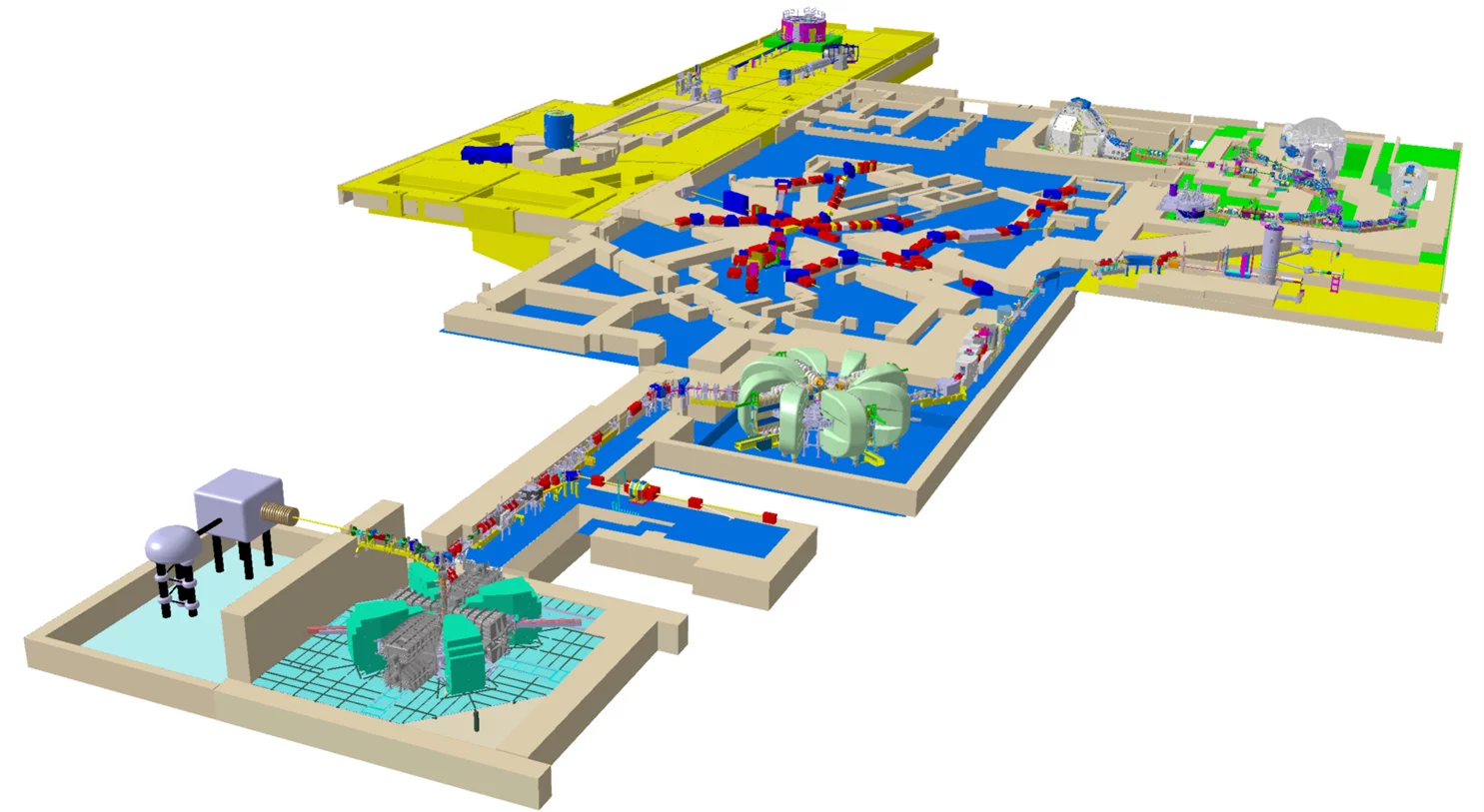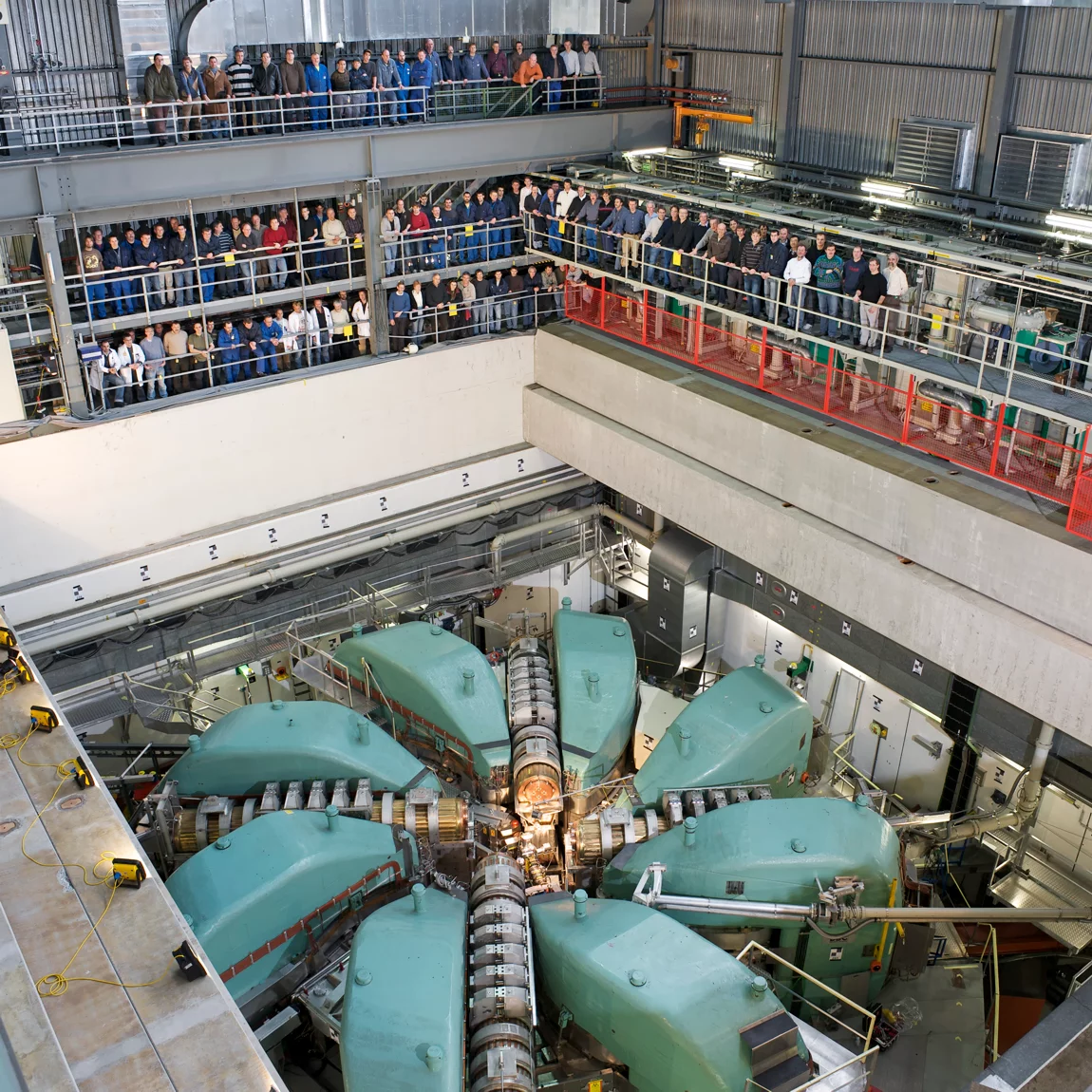The High Intensity Proton Accelerator Facility (HIPA) provides a 1.4 MW proton beam for the production of mesons and neutrons. At PSI, these secondary particles are used for materials science and particle physics. With a beam current of up to 2.4 mA, HIPA holds the world record for a cyclotron based accelerator facility. With 10 Trillion protons accelerated per second a high intensity of secondary particles is produced for high-precision experiments.
HIPA is the motor driving the only continuous-beam spallation neutron source in the world (SINQ) and the world's most powerful continuous-beam μSR facility (SμS). It also serves the particle physics program with pions, muons and ultracold neutrons. A variety of world-leading instruments are available for research at the 20 different user facilities of HIPA.
How it works
In a three stage process, protons are accelerated to 79% of the speed of light. The first stage consists of a microwave driven proton source providing a 60 kV DC proton beam with a net current of approximately 10 mA for the Cockcroft-Walton (CW) Pre-Accelerator. The CW raises the beam energy from 60 keV to 870 keV. The beamline between the CW and the Injector 2 cyclotron is equipped with a two-stage buncher. The purpose of these bunchers is to convert the continuous (DC) beam provided by the CW into a bunched beam with a bunch frequency of about 50 MHz. This is required because cyclotrons (like all RF-accelerators) can only accelerate particle bunches that enter the machine during the accelerating phase. The Injector 2 cyclotron collimates the beam and accelerates the remaining protons to 72 MeV (37 % of the speed of light) as required for the injection into the Ring cyclotron. An electrostatic beam splitter located in the 72 MeV transfer line allows to split up to 100 uA off the beam, which can be used for the production of radio-isotopes in the IP2-facility. The main fraction of the beam is injected into the Ring cyclotron, which provides most of the power to the beam and accelerates the proton bunches up to 590 MeV (79 % of the speed of light) as required for the efficient production of secondary particles.
After extraction from the Ring cyclotron the beam is guided towards two graphite targets where pions and muons are generated for user experiments. The remaining beam is transported to the SINQ target for the production of neutrons. Every few minutes the full beam is kicked for several seconds to the beamline of the ultra-cold neutron source (UCN).
The accelerators
The Cockcroft-Walton Pre-Accelerator
The Injector 2 Cyclotron
The Ring Cyclotron
Technology
Ion Source
Electrostatic Elements
Targets
User Facilities
Neutron Spallation Source SINQ
Swiss Muon Source SμS
Laboratory for Particle Physics LTP
Isotope Production


